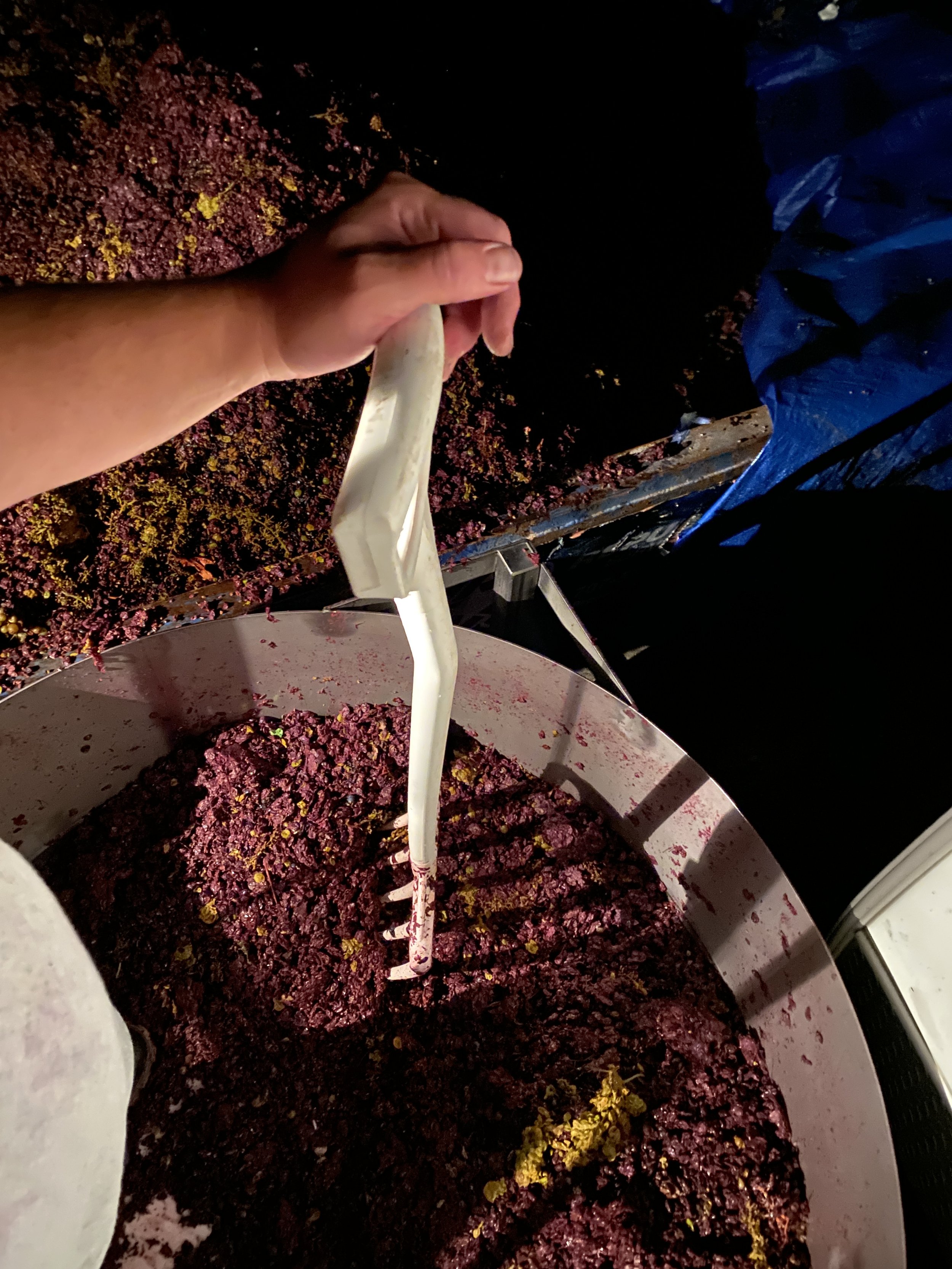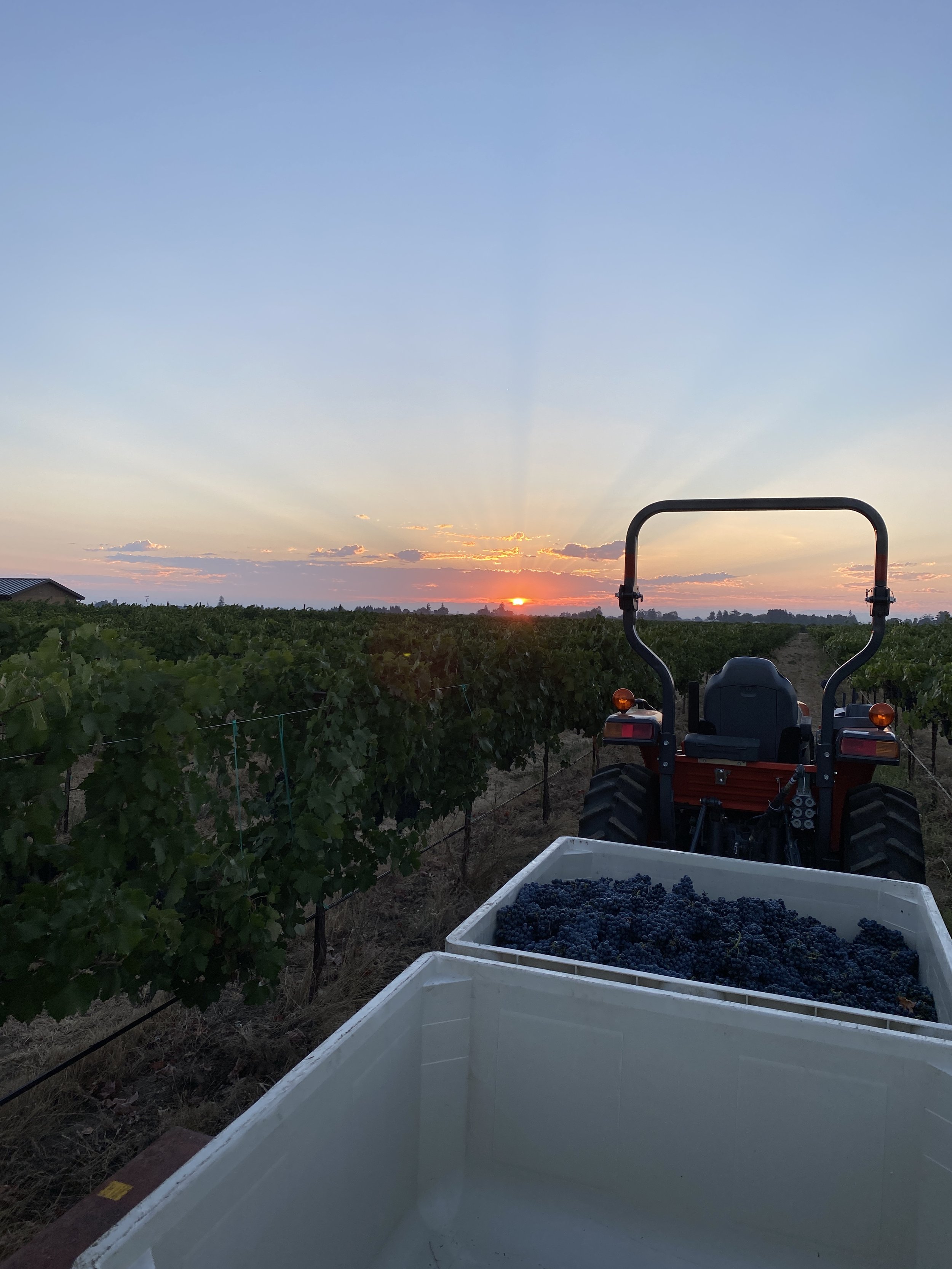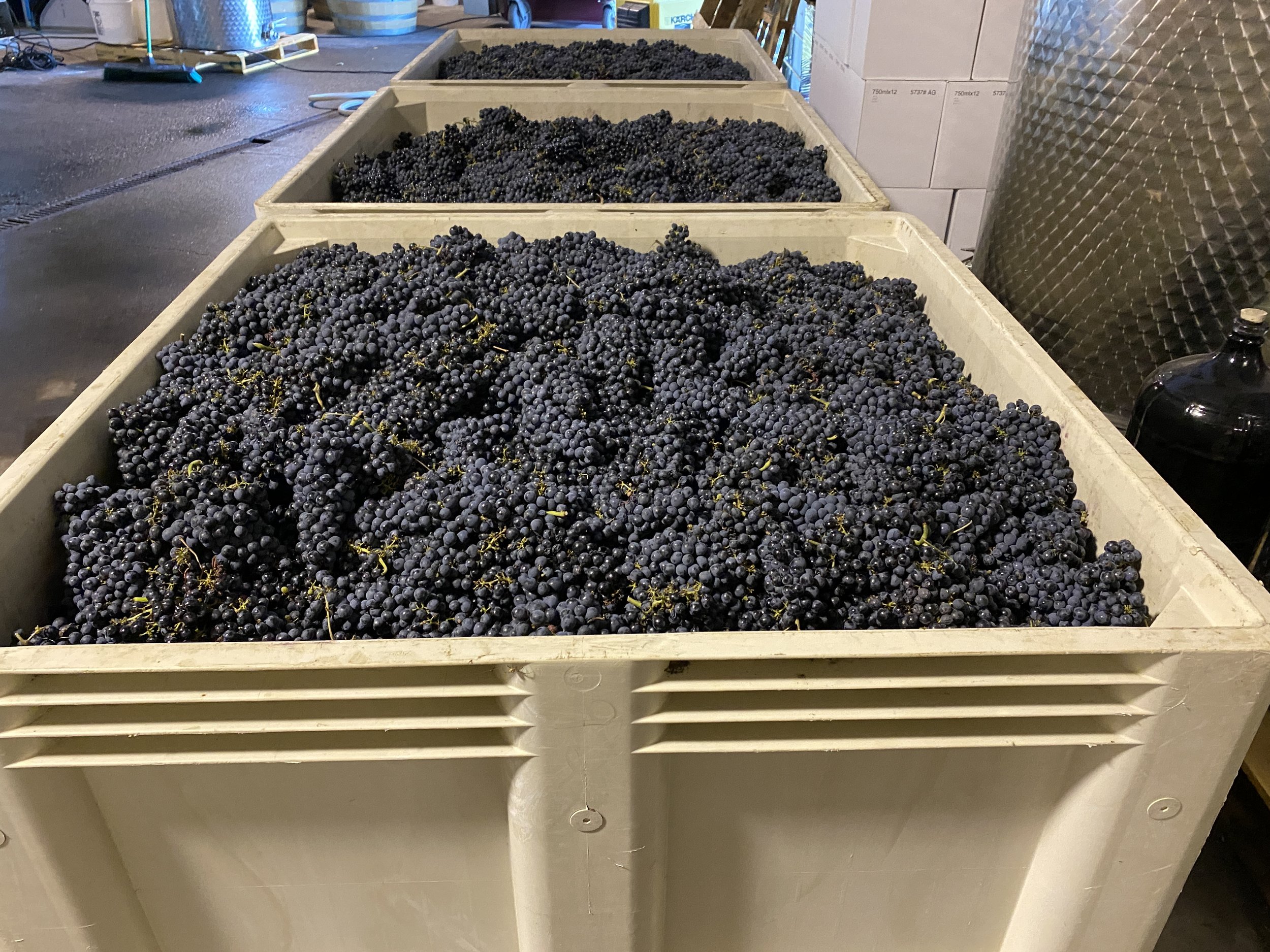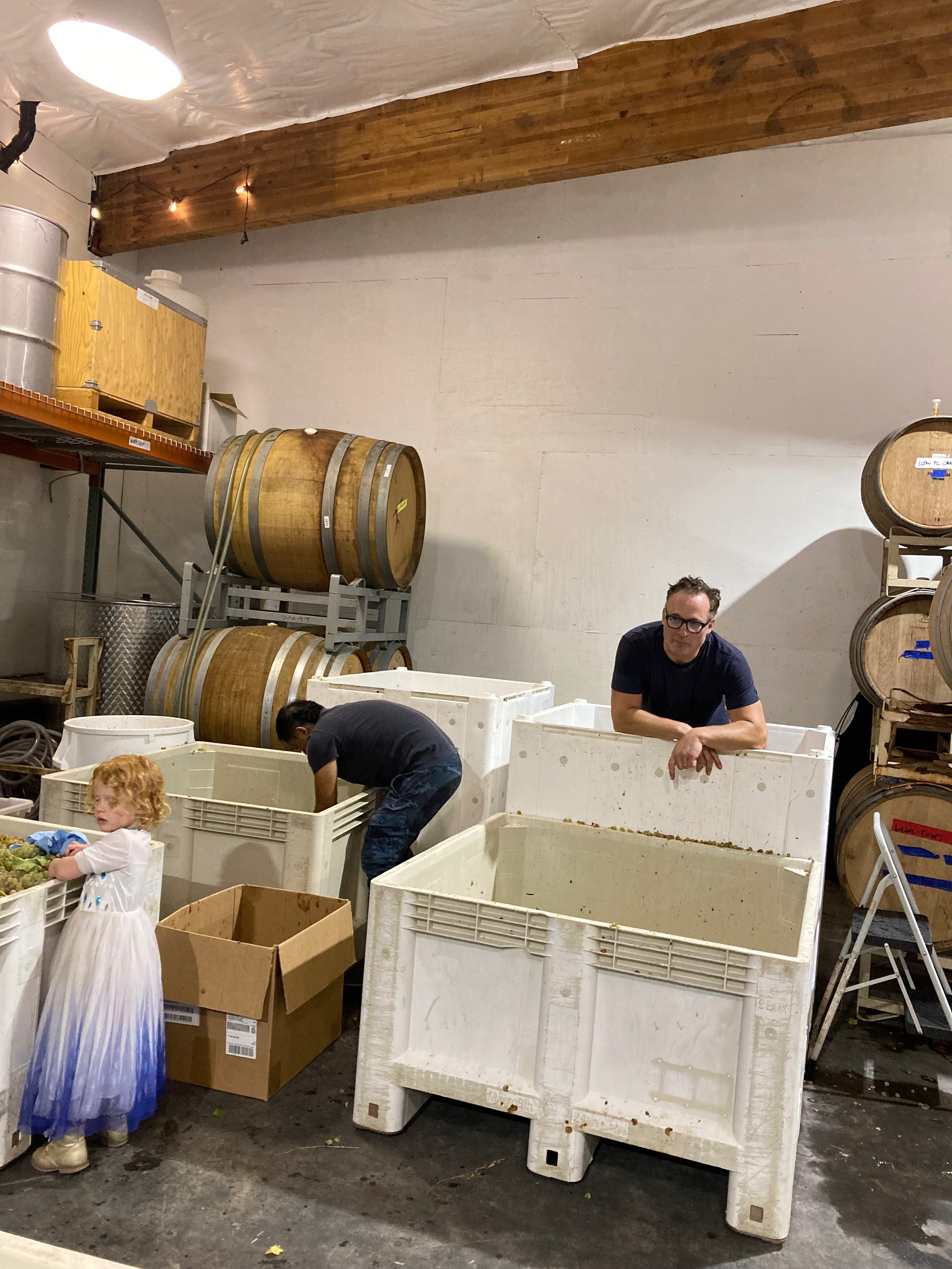



Prieto Picudo 2022
Of all the wines I have ever made, this one is my favorite. But if I had to enter it in a local wine competition, I might be nervous, because it's not very 'California'. It's not overly suave or luxurious. In fact, it starts out dark and firm, more soil than fruit, but then, as if from nowhere, a beam of dark cherry and redcurrant, then rocks and delicate spice, followed by more fruit, and on it goes. Such hyperbole may be a bit much, but this wine makes me so happy I don't know what else to write. Never mind that it was all so unexpected, but enough with the blather and on with the details:
The Grape
Prieto Picudo is an obscure variety, native to León in northern Spain, where it is typically made into rosé, or blended with other varieties. On its own, it can be harsh and overly tannic, yet it is very drought resistant, making it a reliable producer for growers in Spain. Those same growers, however, are starting to realize that with better farming, they can coax more complexity out of the grapes. In turn, producers have begun experimenting with different fermentation and aging methods, both of which show promising results. In the right hands, this grape can not only offer up redcurrant, licorice, and mineral notes, but also make a complete and balanced wine on its own, with no need for a blending partner. Oh, and the grapes are blue, so very, very blue (most 'red' varieties are more purple/black).
The Source
Most of our wines are made with fruit that we farm, namely Syrah and Zinfandel here in the Russian River Valley. But in 2022, I wanted to do something different, so I perused the grape listings on Wine Business Monthly and stumbled across one for Tempranillo. Now, Tempranillo makes dynamite wines (Rioja, Ribera Del Duero), but I had no interest in making one, so I have no idea why I clicked on it. But I did, and there it read: "This is NOT for Tempranillo. I have 2 tons of Prieto Picudo for sale." You see, when you list grapes for sale, you must choose from a drop down menu to select the grape variety, but despite a list of 200+ varieties, Prieto Picudo wasn't on it. Probably because John Gash, of Prie Winery, is the only person growing it in the U.S. Which makes us, as far as I know, only the second producer to make wine from this grape.
John farms all of his vineyards organically, with no tilling, no synthetic herbicides or pesticides, only stuff that's good for the grapes, good for the soil, and good for the people. The vineyard is located along the Mokelumne River, near Lodi, about three hours inland from the coast.
The Winemaking
I had never worked with this variety, so I made two different lots. The first I fully crushed and destemmed, while the other was stomped by foot, with the stems intact. After two days of cold soaking, the fermentation took off via native yeast in open-top fermenters. Nothing was added - no yeast, no nutrient, no acid, nada. Ten days later, the wine was pressed and put into neutral oak barrels, where it sat for 20 months.
After 20 months, it showed potential, with loads of dark fruit, minerals, and dark chocolate. But it needed a little lift (that's wine speak for freshness, like lemon on grilled fish). Fortunately, I had one barrel of Zinfandel that we picked early in 2022 which was bright and cheery. After several blending trials, we dialed in the percentages, let the wines marry together for four months, and into the bottle it went, with a small amount of SO2 to keep it safe.
How's it taste?
Despite the drama of the intro paragraph above, this wine is neither weird, nor funky in any way. It is clean and precise, with medium body, firm tannins, and beautiful fruit. But the way in which those elements work together has to be tasted, no combination of words will suffice.
How to drink and enjoy
These wines were bottled in late August, and could use another month or two to find their feet. Wines also don't like being shipped, and are usually much better if given a week or so to settle down.
But who has such patience? I know I don't, so here's the fix: Open it the night before (or morning of), pour a couple ounces out, replace the cork, shake it up good, and let it sit until you're ready to consume. Oh, and serve around 60 degrees if possible. Your efforts (and patience) will be rewarded.
Details
Appellation: Mokelumne River
Vineyard: Prie Vineyard
Aging: 24 months in neutral French oak
Production: 94 cases
Specs: Alcohol: 13.6% | Titratable Acidity: 6.36 g/L | pH: 3.62 | Volatile Acidity: 0.96 g/L
Of all the wines I have ever made, this one is my favorite. But if I had to enter it in a local wine competition, I might be nervous, because it's not very 'California'. It's not overly suave or luxurious. In fact, it starts out dark and firm, more soil than fruit, but then, as if from nowhere, a beam of dark cherry and redcurrant, then rocks and delicate spice, followed by more fruit, and on it goes. Such hyperbole may be a bit much, but this wine makes me so happy I don't know what else to write. Never mind that it was all so unexpected, but enough with the blather and on with the details:
The Grape
Prieto Picudo is an obscure variety, native to León in northern Spain, where it is typically made into rosé, or blended with other varieties. On its own, it can be harsh and overly tannic, yet it is very drought resistant, making it a reliable producer for growers in Spain. Those same growers, however, are starting to realize that with better farming, they can coax more complexity out of the grapes. In turn, producers have begun experimenting with different fermentation and aging methods, both of which show promising results. In the right hands, this grape can not only offer up redcurrant, licorice, and mineral notes, but also make a complete and balanced wine on its own, with no need for a blending partner. Oh, and the grapes are blue, so very, very blue (most 'red' varieties are more purple/black).
The Source
Most of our wines are made with fruit that we farm, namely Syrah and Zinfandel here in the Russian River Valley. But in 2022, I wanted to do something different, so I perused the grape listings on Wine Business Monthly and stumbled across one for Tempranillo. Now, Tempranillo makes dynamite wines (Rioja, Ribera Del Duero), but I had no interest in making one, so I have no idea why I clicked on it. But I did, and there it read: "This is NOT for Tempranillo. I have 2 tons of Prieto Picudo for sale." You see, when you list grapes for sale, you must choose from a drop down menu to select the grape variety, but despite a list of 200+ varieties, Prieto Picudo wasn't on it. Probably because John Gash, of Prie Winery, is the only person growing it in the U.S. Which makes us, as far as I know, only the second producer to make wine from this grape.
John farms all of his vineyards organically, with no tilling, no synthetic herbicides or pesticides, only stuff that's good for the grapes, good for the soil, and good for the people. The vineyard is located along the Mokelumne River, near Lodi, about three hours inland from the coast.
The Winemaking
I had never worked with this variety, so I made two different lots. The first I fully crushed and destemmed, while the other was stomped by foot, with the stems intact. After two days of cold soaking, the fermentation took off via native yeast in open-top fermenters. Nothing was added - no yeast, no nutrient, no acid, nada. Ten days later, the wine was pressed and put into neutral oak barrels, where it sat for 20 months.
After 20 months, it showed potential, with loads of dark fruit, minerals, and dark chocolate. But it needed a little lift (that's wine speak for freshness, like lemon on grilled fish). Fortunately, I had one barrel of Zinfandel that we picked early in 2022 which was bright and cheery. After several blending trials, we dialed in the percentages, let the wines marry together for four months, and into the bottle it went, with a small amount of SO2 to keep it safe.
How's it taste?
Despite the drama of the intro paragraph above, this wine is neither weird, nor funky in any way. It is clean and precise, with medium body, firm tannins, and beautiful fruit. But the way in which those elements work together has to be tasted, no combination of words will suffice.
How to drink and enjoy
These wines were bottled in late August, and could use another month or two to find their feet. Wines also don't like being shipped, and are usually much better if given a week or so to settle down.
But who has such patience? I know I don't, so here's the fix: Open it the night before (or morning of), pour a couple ounces out, replace the cork, shake it up good, and let it sit until you're ready to consume. Oh, and serve around 60 degrees if possible. Your efforts (and patience) will be rewarded.
Details
Appellation: Mokelumne River
Vineyard: Prie Vineyard
Aging: 24 months in neutral French oak
Production: 94 cases
Specs: Alcohol: 13.6% | Titratable Acidity: 6.36 g/L | pH: 3.62 | Volatile Acidity: 0.96 g/L
